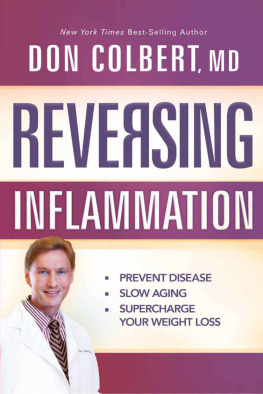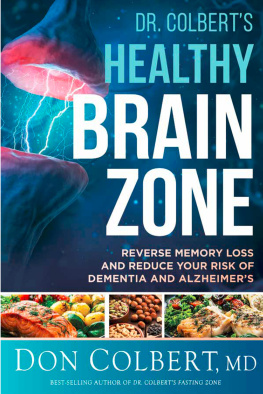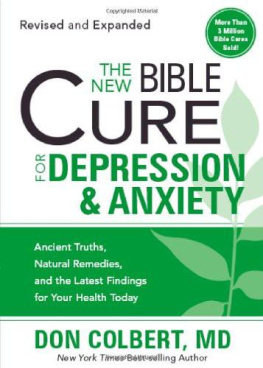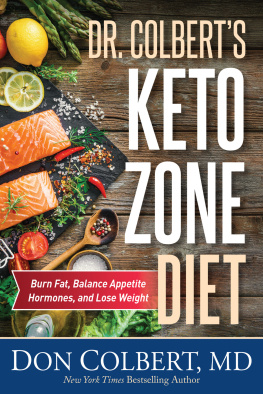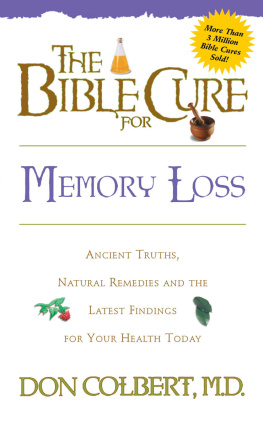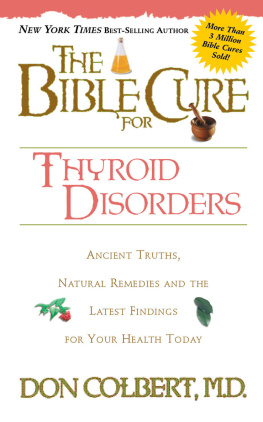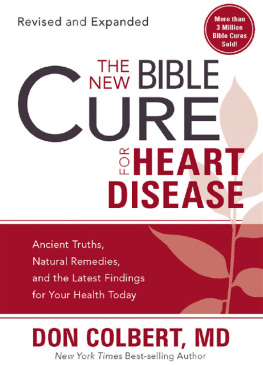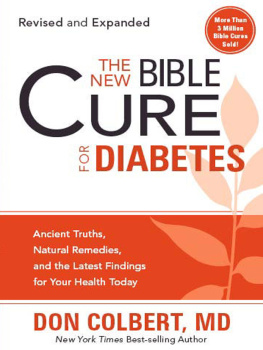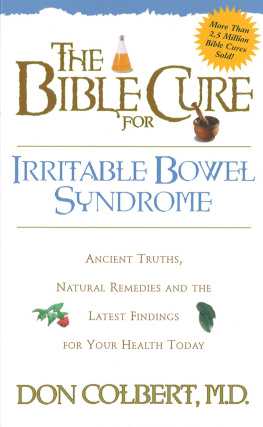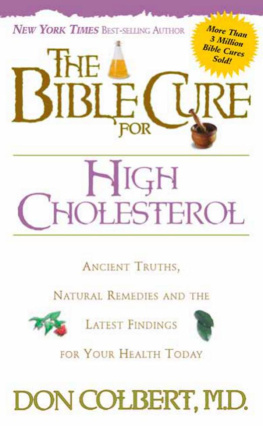
Note the steps you need to take to overcome tension headaches:
Maintain good posture
Take frequent breaks
Relax
Do simple stretching exercises
Use hold or cold packs
Take warm showers
Use biofeedback
Exercise regularly
Try deep breathing
In your journal, write down the exercises and relaxation techniques you plan to begin right away.

Y ou do not have to learn to live with chronic headache pain. God is a healer who promises health to those who ask Him. Look at what the psalmist wrote: O LORD my God, I cried out to you for help, and you restored my health (Ps. 30:2).
Again, God promises health and healing to those who seek Him in Jeremiah 30:17: I will give you back your health and heal your wounds, says the LORD.
Gods promises for you are powerful, and they are yours right now. The Bible says, For no matter how many promises God has made, they are Yes in Christ. And so through him the Amen is spoken by us to the glory of God (2 Cor. 1:20, NIV). Have you wondered what Gods answer is to your cry for healing? Its yes and amen. Isnt that great news?
So lets explore some God-given nutritional ways to find healing from headaches forever. Here are some important nutritional steps you can take.
Keep a Food Diary
If you suffer from migraines, your first order of business is to start keeping a food diary. Keep it in your purse, briefcase or on the kitchen table. When you experience a headache, write down all the foods that you ate a few hours prior to the onset of the headache. You may begin to recognize some patterns right away that may help you understand exactly what is causing your headaches.
I have created a diary format for you to use as you begin to investigate your own migraine experiences. It is located at the back of this booklet in the appendix. I trust that you will find it helpful in targeting your migraine triggers, so please copy it and make good use of it.
Many individuals begin to see distinct patterns emerge as they list their eating habits following a migraine. Often foods containing amines are responsible for triggering migraines.
Food allergies or sensitivities are also triggers for migraines. Simply detecting and removing these food allergies or sensitivities from your diet will often eliminate or lessen the severity of your migraines.
Common foods that trigger headaches are:
Ripened cheeses such as cheddar cheese and blue cheese
Processed meats such as sausage, hot dogs, salami, pepperoni and bologna
Pickled, fermented or marinated foods
Nuts, especially peanuts
Chocolate
Caffeinated beverages such as coffee, tea and sodas
Alcoholic beverages such as red wine, brandy and sherry
Citrus fruits
Bananas
Snow peas and lima beans
Pizza
Sourdough bread
So, when you begin keeping your food chart, make a special note of any patterns that develop with any of these common offenders.
Avoid Dietary Amines
Dietary amines are the first migraine trigger food group that I would like to address. These foods include:
Chocolate
Red wine, brandy, sherry and beer
Fermented foods such as soy sauce, pickles and sauerkraut
Aged cheeses, sour cream and yogurt
Pickled meats
Dried fruits such as raisins, figs and dates
Histamine, tyramine and phenylethylamine are three different amines that may trigger migraines.
Histamine is found in beer, cheese and other similar foods. It may cause blood vessels to dilate, which may lead to migraines also. Other foods that contain high histamine levels include sausage, pickled cabbage and fish.
If you notice of pattern of migraines after eating these foods, then avoid them.
Be on the watch for tyramine. Tyramine is another amine that is found in red wine, yogurt, sour cream, aged cheeses, pickled meats, many fish, fermented foods such as soy sauce, sauerkraut, pickles, figs, raisins, dates and fresh baked bread. Tyramine is also in many processed meats such as bologna and salami. Tyramine causes blood vessels to constrict, which may lead to migraines.
Look out for phenylethylamine, which is found in cheese and chocolate. This also triggers migraines.
Other forms of amines are found in citrus fruits such as oranges, lemons and grapefruits. Therefore, if any of these foods seem to trigger your migraine headaches, it is probably because of one of the amines such as histamine, tyramine or phenylethylamine, which are all potent triggers for many migraine sufferers.
Be on the Alert for Nitrates
Other potent food triggers for migraine headaches are nitrites and nitrates. Sodium nitrate and nitrite are preservatives used in processed meats such as bologna, hot dogs, bacon, sausage, pepperoni and Spam. Meats that contain nitrites and nitrates have an artificial red color, such as the coloring youve noticed in hot dogs.
Watch Out for Sulfites
Other preservatives that many times trigger headaches are sulfites. Sulfites are found in salad bars, dried fruits, wines and even in French fries. Sulfites are used to keep vegetables looking fresh.
Screen Out Dyes
Other food ingredients that may trigger migraines are dyes, especially yellow dye #5, which is commonly added to margarine.
Avoid MSG
MSG is monosodium glutamate. This is a flavor enhancer used by many Chinese restaurants. It is also present in many frozen dinners, salad dressings, fast foods, seasonings and even potato chips. It is listed on the ingredient list of the items you purchase, so be careful to check carefully. MSG commonly causes headaches that are also accompanied by nausea, lightheadedness and chest pain within thirty minutes. This reaction is called the Chinese restaurant syndrome.
Avoid NutraSweet
NutraSweet, otherwise known as aspartame, is used in diet soda, many chewing gums, cakes, candy, diet foods, cookies and ice cream. NutraSweet is a common migraine headache trigger, and it is known to cause other kinds of headaches as well. If you suffer from headaches, especially migraine headaches, be careful to avoid items that contain NutraSweet or aspartame.
Drink Plenty of Water
Believe it or not, drinking enough water can dramatically reduce your headaches. Many headaches are caused by dehydration or partial dehydration. Drink two to three quarts of filtered water each day. Drinking enough water throughout the day may help prevent migraines by keeping the body, including the brain, well hydrated.
Watch Your Blood Sugar
Low blood sugar, otherwise known as hypoglycemia, is also a powerful trigger for migraine headaches in some people. This is often the result of eating foods or drinking drinks that are too high in sugar. Within two to three hours after ingesting too much sugar, you can develop low blood sugar, which may lead to a migraine headache.
Consuming a low-carbohydrate, low-sugar diet is very important in preventing migraines since this lowers the insulin, which will thus lower arachidonic acid. Arachidonic acid is a fatty acid that can lead to migraine headaches.
Avoid sugar, foods with high-sugar content, processed foods such as white bread, white flour, white rice and most cereals other than whole-grain cereals. These foods tend to raise blood sugar levels, which in turn raises insulin levels and may lower blood sugar.
Next page

